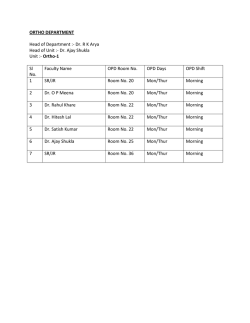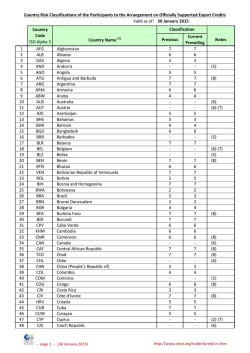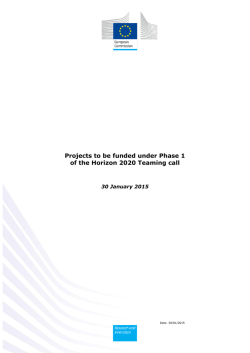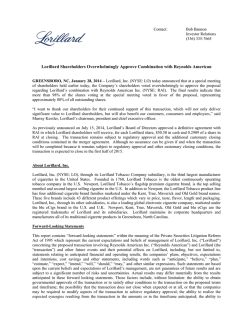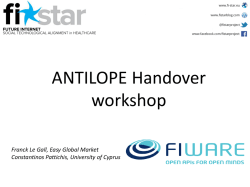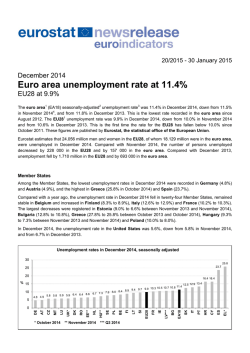
The prevalence and risk factors of substance use
108 The prevalence and risk factors of substance use among university students in TRNC _____________________________________________________________________________________________________ AraĢtırma / Original article The prevalence and risk factors of substance use among university students in Turkish Republic of Northern Cyprus Ebru ÇAKICI,1 Mehmet ÇAKICI,1 Ayhan Eġ,2 Deniz ERGÜN3 _____________________________________________________________________________________________________ ABSTRACT Objective: As the age starting using drugs decrease and drug use among young people increase, the prevention programs start to focus on young people who has become most important risk group. The purpose of this study is to determine the characteristics and risk factors for cigarette, alcohol and other psychoactive drug (OPD) use among university students in Turkish Republic of Northern Cyprus (TRNC). Methods: A survey was administered to 1323 university students randomly chosen. The questionaire was designed to obtain data about sociodemographic characteristics of the students, the frequency of their cigarette-alcohol and OPD use and beliefs and attitudes of the students about substance use. Results: 398 (30.3%) of the students were from TRNC, 824 (62.7%) from Turkey and 92 (7.0%) from other countries. The life-time use of cigarette was 69.5% and boys smoked more than girls. Students from Turkey smoked cigarette significantly more often. Life-time use of any alcoholic beverages was 81.0% and the students from TRNC used alcohol significantly more than others. Lifetime use of any illicit drug was 10.9% and the ratio was higher for boys. Life-time use of cigarette and life-time use of OPD and gender (being male) were found to be positively associated with the tendency to use illicit drugs. Conclusion: Repeating prevalence studies for substance use among university students at certain intervals will be helpful to follow the changes of substance use rates and determine the substances mostly preferred so that prevention programs can be planned more efficiently. (Anatolian Journal of Psychiatry 2014; 15:108-115) Key words: psychoactive drugs, university students, risk factors, Turkish Republic of Northern Cyprus Kuzey Kıbrıs Türk Cumhuriyeti üniversite öğrencileri arasında madde kullanım yaygınlıkları ve risk etkenleri ÖZET Amaç: Madde kullanımına başlama yaşı düştüğü ve gençler arasında madde kullanımı arttığı için, önleme programları önemli bir risk grubu haline gelen gençler üzerine odaklanmaktadır. Bu çalışmanın amacı, KKTC‟deki üniversite öğrencileri arasında sigara, alkol ve diğer psikoaktif madde (DPM) kullanımının özelliklerini ve ilgili risk etkenlerini belirlemektir. Yöntem: Rastgele seçilmiş 1323 üniversite öğrencisine anket uygulanmıştır. Soru formu öğrencilerin sosyodemografik özellikleri, sigara, alkol ve DPM kullanım sıklığı ve öğrencilerin madde kullanımı ile ilgili inanç ve tutumlarıyla ilgili bilgi toplamak amacıyla hazırlanmıştır. Sonuçlar: Öğrencilerin 398‟ü (%30.3) KKTC, 824‟ü (%62.7) Türkiye ve 92‟si (%7.0) diğer ülkelerdendi. Yaşam boyu sigara içme oranı %69.5‟ti ve erkekler kızlara göre daha sık sigara içiyordu. Türkiye‟den gelen öğrenciler arasında sigara içme oranı anlamlı olarak daha yüksekti. Yaşam boyu herhangi bir alkollü içecek kullanımı %81.0‟dı ve KKTC‟li öğrenciler diğerlerine _____________________________________________________________________________________________________ 1 Assoc.Prof.Dr., Psychiatrist, Near East University, Psychology Department, LefkoĢa, Turkish Republic of Northern Cyprus Doctoral Student, Near East University, Psychological Counselling and Guidance Department, LefkoĢa, Turkish Republic of Northern Cyprus 3 Dr., Psychologist, Near East University, Psychology Department, LefkoĢa, Turkish Republic of Northern Cyprus YazıĢma adresi / Address for correspondence: Doç.Dr. Ebru ÇAKICI, Near East University, Psychology Department, LefkoĢa, Turkish Republic of Northern Cyprus E-mail: [email protected] GeliĢ tarihi: 13.11.2012, Kabul tarihi: 22.12.2012, 2 Anatolian Journal of Psychiatry 2014; 15:108-115 Çakıcı et al. 109 _____________________________________________________________________________________________________ göre anlamlı olarak daha yüksek oranda alkol kullanmaktaydı. Yaşam boyu herhangi bir yasa dışı madde kullanımı %10.9‟du ve erkekler arasında bu oran daha yüksekti. Yaşam boyu sigara içme, erkek olmak ve yaşam boyu DPM kullanımı yasa dışı madde kullanımını yordayıcı etkenler olarak bulunmuştur. Tartışma: Belli aralık-larla üniversite öğrencileri arasında madde kullanım yaygınlık çalışmalarını yinelemek madde kullanım oranların-daki değişimin izlenmesi ve en çok kullanılan maddelerin saptanmasında faydalı olabilir, bu da önleme program-larının daha etkin biçimde planlanmasını sağlayacaktır. (Anadolu Psikiyatri Derg 2014; 15:108-115) Anahtar sözcükler: Psikoaktif maddeler, üniversite öğrencileri, risk faktörleri, Kuzey Kıbrıs Türk Cumhuriyeti _____________________________________________________________________________________________________ INTRODUCTION Substance use is a biopsychosocial problem and because of all different dimensions effective on it, there are many difficulties to control 1-4 this problem. Cyprus is on Balkan pathway of drug transit. Balkan pathway starts from Afghanistan, Pakistan and Iran which is called the ‘Golden Crescent’ and passses through Turkey to West Europe. More than 75% of the heroin seized in Europe comes from Balkan pathway and Turkish and Cypriot smugglers are effective 5 on this pathway. Cyprus is an island and this 6 makes it a suitable place for drug transit. Like 7 Cyprus, all the countries on the drug transit 8,9 way are negatively effected from drug traffic. Illegal drug traffic has increased in TRNC 10 recently. The recent increase in drug use among young people has caused a focus on university students. Though there has been no prevalence study about psychoactive drug use among university students in TRNC, the report prepared by the ‘Comission Against Substance Use’ of Ministry of Education put forward evidences indicating substance use among university stu11 dents in TRNC. At a qualitative research, the interviews revealed that substance use increase among young people because of the negative effects of large number of university students coming from Turkey, Cypriots returning back to Cyprus after living for long periods in England and tourists coming from 12 different countries. Recent high school studies by using ESPAD (The European School Survey Project on Alcohol and Other Drugs) methodology showed that drug use was a problem also for TRNC as in many other countries but compared to other 13,14 European countries it could be concluded that it was less prevalent. Only life-time alcohol use which was about 85-90% was at a moderate rate compared to European countries. In 15 1996 life time use of any OPD was 5.5%, 16 which increased to 8.3% in 1999 and 8.0% in 17 2004. The prevalence studies conducted in TRNC show an increase at the rate of drug use like 18 the tendency in many parts of the world. Although there are more than forty thousand university students in TRNC, data is not available about the dimensions of drug use at the universities. The goal of this study is to determine the characteristics and risk factors for cigarette, alcohol and OPD use among university students and provide data for preparing prevention program at the universities. METHODS Study population and sample This study is made for the ‘Higher Education Planning, Evaluation, Accreditation and Coordination Council’ of TRNC by Psychology Department of Near East University. There were six universities in TRNC and the study was conducted in three of them (Near East University, Eastern Mediterranean University, International Cyprus University). Data of the research was obtained from the three universities where 77.7% of total of all 43709 university students in TRNC at 2007-2008 spring semester attended. The sample size was determined to represent the population with 95% confidence interval and 3% margin of error. Stratified sampling was planned as some variables like grade, department and nationality could be effective on prevalence of substance use. The survey was applied to a sample of 1323 students randomly derived from a total of 43709 students attending to universities of TRNC. To represent each grade, one or two courses were randomly chosen among all the courses opened for English preperatory class, grade 1, th 2, 3 or 4 students through out the university. Each course was chosen from a different faculty. The data was collected by the ‘Psychological Guidance and Counselling Center’ of the related universities. The instrument The questionnaire consisted of questions about sociodemographic characteristics of the students and questions about cigarette, alcohol Anadolu Psikiyatri Derg 2014; 15:108-115 110 The prevalence and risk factors of substance use among university students in TRNC _____________________________________________________________________________________________________ and OPD use. The questions about cigarette, alcohol and OPD use were prepared according 14,15 to the survey questions of ESPAD. The questions about sociodemographic variables were prepared by the authors. The survey form was prepared as a multiple choice self-report questionnairy. To apply the questionnaire to foreign students, the questionnaire was translated to English by two psychologists and a common version was taken. The final version was edited by an English Language teacher who was a native English speaker. Reliability and validity To evaluate the reliability of the survey form, a method is to evaluate the consistency of the results. The students who answered that they had never tried a type of drug, should answer at the other question asking at which age they first tried certain drugs as ‘never’. The ratios of inconsistent answers given to these two questions were compared. The rate of inconsistent answers for cigarette was 3.4%, for alcohol 3.8%, for volatiles 0.8%, for sedative-hypnutics 0.6%, for marihuana 0.7%, for amphetamin 0.3%, for ecstasy 0.3%, for heroin 0.2%, for cocaine 0.2%, for LSD 0.3%, for steroids 0.6%. These results suggest suggest high reliability of our study. In ESPAD study the mean of inconsistent answers were found as 3% and ratios under 10% were evaluated as ac13 ceptable. The validity study of the survey form at ESPAD study was either done by comparing the results with that of another instrument or by the logical consistency of the answers of the questions. When the rates of drug use of the countries that took part at the drug prevalence study of both World Health Organization and ESPAD study were compared, consistent results were 13 found. For the countries that did not take part at WHO study, to evaluate the validity of ESPAD questionaire the logical consistency of the answers were evaluated. The rate of use of any of the drugs during life-time should be more than during the last 12 months or last one month and the rate of use during the last 12 months should be higher than the rate during the last one month. The logical consistency of the answers at our study for cigarette was 98.5%, for alcohol 98.7%, for each OPD it was more than 99%. These ratios when compared 13 to that of ESPAD study are quiet high. Another measure for validity is about the prevalence of a substance which does not exist in reality but asked at the questionaire. Its Anatolian Journal of Psychiatry 2014; 15:108-115 prevalence is found to be 0.4% at this study which also supports the validity of the results. Statistical analysis Frequency tables were formed with the percentages derived from the data. Groups were compared regarding a number of characteristics using chi-square. Multiple regressions were used to examine the associations between the independent variables and cigarette, alcohol, OPD and illicite drug use (dependent variables). Independent variables were: gender, age, nationality, income level, school success, cigarette use, alcohol use, and years in university. RESULTS There were 544 (41.1%) female and 774 (58.5%) male students. The mean of their age was 21.9±3.2. The sample was formed by 398 (30.3%) Turkish Cypriot students, 824 (62.7%) students from Turkey and 92 (7.0%) students from other countries. Among the students that participated the study 140 (10.6%) were from English preparatory school, 245 (18.5%) were from grade 1, 350 (26.5%) were from grade 2, 263 (19.9%) were from grade 3 and 316 (23.9%) were from grade 4. 1195 (90.3%) were single, 18 (1.4%) were married, 103 (7.8%) were engaged, 1 (0.1%) was divorced and 3 (0.2%) were widows. Cigarette use Life-time use of cigarette was 69.5% among all students and males smoked more often than females (Table 1). Life-time use of cigarette among students from Turkey was more often than students from TRNC or other countries (Table 2). 10.7% of the students reported to use cigarette earlier than 11 years old. Most of them reported to start smoking at age 18-20 (29.5%) and at age 16-17 (27.0%). 42.9% of the females and 31.3% of the males reported to have used cigarette after age 18. Males started using cigarette at earlier ages (χ2=36.28, p=0.000). Alcohol use Life-time use of any alcoholic beverages among all students was 81.0%. Males used alcohol more often than females (Table 1). Students from TRNC consumed alcohol more often than the students from Turkey or other countries (Table 2). 8.5% of the students reported to use alcohol under age 11. Most of the students repoted to use alcohol at age 16-17 (30.6%) and at age 18-20 (26.6%). 42.5% of the females and 25.7% of the males reported to have Çakıcı et al. 111 _____________________________________________________________________________________________________ Table 1. The frequency of use of psychoactive substances by gender ____________________________________________________________________________ Female n % Male n Total % n % ____________________________________________________________________________ Tobacco Alcohol Marijuana Volatiles Sedatives Cocaine Heroin LSD Amphetamine Ecstasy Steroid 345 419 19 6 36 2 2 1 2 4 1 64.0 77.7 3.6 1.1 6.8 0.4 0.4 0.2 0.4 0.8 0.2 566 643 129 25 51 19 5 11 10 45 14 73.3 83.3 17.3 3.4 7.0 2.6 0.7 1.5 1.4 6.1 1.9 911 1052 148 31 87 21 7 12 12 49 15 69.5 81.0 11.6 2.5 6.9 1.7 0.6 1.0 1.0 3.9 1.2 ____________________________________________________________________________ Table 2. The frequency of use of psychoactive substances by nationality ____________________________________________________________________________ TRNC n Turkey n % % Others n % ____________________________________________________________________________ Tobacco Alcohol Marijuana Volatiles Sedatives Cocaine Heroin LSD Amphetamine Ecstasy Steroid 221 349 31 6 13 7 1 4 4 11 4 55.5 88.4 8.0 1.6 3.4 1.8 0.3 1.0 1.0 2.9 1.0 629 649 99 3 71 11 4 4 6 30 9 77.0 79.1 12.3 2.9 8.9 1.4 0.5 0.5 0.8 3.8 1.1 58 63 17 1 2 2 1 3 2 7 1 63.0 68.5 10.7 1.3 2.6 2.6 1.3 3.8 1.3 8.9 1.3 ____________________________________________________________________________ Table 3. Risk factors predictive of cigarettte use __________________________________________________________________________________ B Standard Error B β t p __________________________________________________________________________________ Constant Gender Age Nationality School success Income Alcohol use OPD use Illicite use Years at the university -1.299 -0.081 0.035 0.848 0.194 0.165 0.226 0.167 1.275 0.248 0.866 0.195 0.031 0.166 0.113 0.143 0.038 0.402 0.518 0.076 -1.500 -0.018 0.052 0.215 0.072 0.048 0.252 0.025 0.145 0.148 0.13 -0.41 1.13 5.10 1.72 1.15 5.91 0.42 2.46 3.26 0.680 0.258 0.000 0.086 0.249 0.000 0.677 0.014 0.001 __________________________________________________________________________________ R=0.395, R2=0.156, F=46.38, p=0.001 used alcohol after age 18. Males started using alcohol at earlier ages (χ2=63.84, p=0.001). Other psychoactive drug use Life-time prevalence of OPD use among university students was 15.6% and illicit drug use was 10.9%. Students from TRNC when compared to students from Turkey and other countries were Anadolu Psikiyatri Derg 2014; 15:108-115 112 The prevalence and risk factors of substance use among university students in TRNC _____________________________________________________________________________________________________ Table 4. Factors predictive for alcohol use __________________________________________________________________________________ B Standard Error B β t p __________________________________________________________________________________ Constant Gender Age Nationality School success Income Tobacco use OPD use Illicite use Years at the university 3.056 1.200 -0.042 -1.133 0.146 0.235 0.284 0.427 0.267 0.105 0.964 0.213 0.027 0.185 0.127 0.161 0.048 0.451 0.585 0.054 3.171 0.236 -0.050 -0.258 0.049 0.061 0.255 0.056 0.027 0.059 0.002 5.64 -1.58 -6.14 1.15 1.46 5.91 0.95 0.46 1.93 0.000 0.114 0.000 0.249 0.144 0.000 0.344 0.649 0.054 __________________________________________________________________________________ R=0.418, R2=0.175, F=53.38, p=0.001 Table 5. Factors predictive for psychoactive drug use __________________________________________________________________________________ B Standard Error B β t p __________________________________________________________________________________ Constant Gender Age Nationality School success Income Tobacco use Alcohol use Illicite use Years at the university -0.115 -0.031 0.005 0.014 0.011 0.000 0.029 0.004 0.923 0.016 0.096 0.022 0.003 0.019 0.012 0.016 0.005 0.004 0.040 0.008 -1.196 -0.046 0.046 0.024 0.029 0.000 0.177 0.031 0.713 0.066 0.23 -1.44 1.34 0.74 0.91 -0.01 5.89 0.95 22.84 1.91 0.150 0.180 0.462 0.362 0.989 0.000 0.344 0.000 0.057 __________________________________________________________________________________ R=0.313, R2=0.098, F=21.43, p=0.001 Table 6. Factors predictive for illicite drug use __________________________________________________________________________________ B Standard Error B β t p __________________________________________________________________________________ Constant Gender Age Nationality School success Income Tobacco use Alcohol use OPD use Years at the university -0.028 0.040 -0.003 -0.011 0.000 0.003 0.009 0.002 0.549 -0.003 0.074 0.017 0.003 0.015 0.010 0.012 0.004 0.003 0.024 0.007 -0.373 0.078 -0.033 -0.025 0.000 0.007 0.081 0.015 0.711 -0.016 0.71 2.44 -0.96 -0.76 -0.02 0.24 2.46 0.46 22.84 -0.46 0.015 0.340 0.447 0.981 0.813 0.014 0.649 0.000 0.649 __________________________________________________________________________________ R=0.336, R2=0.113, F=25.43, p=0.001 found to have lower ratio of OPD use (TRNC 10.8%, TC 17.4%, other 21.8%) (χ2=67.69, p=0.007) and illicit drug use (TRNC 7.3%, TC Anatolian Journal of Psychiatry 2014; 15:108-115 2 11.6%, others 20.5%) (χ2x =61.25, p=0.028). Frequency of OPD use is shown at Table 1. Males (15.9%) were more likely than females Çakıcı et al. 113 _____________________________________________________________________________________________________ (4.1%) to have used illicit drugs (χ2=51.02, p=0.001). Marihuana was the most commonly used OPD. The age to start using marihuana was mostly 16-17 (30.5%) and 18-20 (40.5%), whereas the age to start using volitile substances was mostly earlier than age 10 (26.5%) and age 11-13 (20.6%). University students reported to use OPD mostly within a group of friends and at their homes. To find the risk factors for cigarette, alcohol, OPD and illicit drug use, life-time use of those drugs were taken as the dependent variable and the predictive variables were investigated with multipl regression analysis (Table 3, 4, 5, 6). DISCUSSION The results of this study provide detailed data about prevelence and characteristics of substance use among university students in TRNC which can be used at future studies and prevention programs. A similarly structured survey form that was used at high school studies in TRNC was used at this study and this enables the comparison of characteristics of substance use among high school and university students and follows the change in the preferences of substances. Life-time use of cigarettes at our sample was 69.5% among all students, and it was found that male students (73.3%) smoke more than female students (64.0%). When we compare our results with other studies made among 19 university students at TRNC and different cities of Turkey, we can find that the rates of 20-22 smoking changes at a wide range. This wide range depends on the definition of smoking and the characteristics of the sample. We found that life-time use of cigarette among students from Turkey (76.4%) was more often than students from TRNC (53.2%) or other countries (64.1%). This finding is concordant with the results of previous high school stud13-15 ies. Prevalence studies made in Turkey among adolescents have shown that cigarette 23,24 is the most commonly used substance. The life time use of any alcoholic beverages among students from TRNC is (88.3%) more than the students from Turkey (77.6%) or other countries (59.0%). When we compare this result with other studies conducted at different 20,25-28 universities in Turkey, it is seen that the university students from Turkey use alcohol less than Turkish Cypriot students. Studies about alcohol use among high school students 15-17 give similar results. In south Cyprus life time alcohol use at least once at similar age group is found to be 85% among Greek Cypriot high 14 school students. The low rate of alcohol consumption in Turkey may be related to religion 13 as alcohol is banned in Islam. Although the religion is also Islam in TRNC, being a touristic island, alcohol consumption is high in both sides of Cyprus and alcohol use is an acceptable behavior and way of entertainment in 18 Cyprus. Though lifetime prevalence of OPD use is 15.8% among university students, it is 8.0% 13 among high school students. These findings show that prevalence of OPD use increase almost two times more with transition from high school to university. Compared to studies con29 30 ducted in USA and Europe show that both OPD and illicit substance use are much lower in TRNC. Among all OPD, the substance used most commonly was marihuana with a ratio of 8.8%. The ratio of marihuana use among 29 college students in USA is more than 50%, and in Europe in Czech Republic 53%, in 30 France 42% and in Spain 39%. Like in this study, all reports related to substance use in TRNC, prevalence studies among high school students, studies made on addicts show that marihuana is the most commonly used illicit 11,12,15,16,31 drug. Volatile substances are found to be used more than other OPD at high school 15-17 studies in TRNC, whereas marihuana is the most commonly used OPD among university students. Volatile substances are reported to be a transition substance to marihuana use among 32 young people. This study shows that the risk for using OPD is higher among students who use cigarette or alcohol. Different studies show a strong relation between OPD use and being 33-35 drunk, high alcohol intake and smoking. Study limitations This study gives information only about university students and does not include young people who do not attend to university. To have a broad picture of psychoactive drug use characteristics of young people in TRNC, studies including young people who do not continue their education should be made. CONCLUSION The increased prevalence of substance use among university students compared to high school students show that prevention programs Anadolu Psikiyatri Derg 2014; 15:108-115 114 The prevalence and risk factors of substance use among university students in TRNC _____________________________________________________________________________________________________ should start at an early age and should continue during university education. Besides cigarette and alcohol use, among OPD, special emphasize should be given to marihuana, volatile and seedative use for the prevention programs in TRNC. Repeating prevalence studies for substance use among university students at certain intervals will help us to follow the changes at substance use rates and determine the substances mostly preferred so that show us which subjects should be emphasized at prevention programs the more. REFERENCES 1. Botvin G. Principles of prevention. RH Coombs, D Ziedonis. Handbook on Drug Abuse Prevention, Boston: Allyn & Bacon, 1995, p.19-43. 12. Karaokçu H. Kuzey Kıbrıs‟ta Uyuşturucunun Ucu. Ölüm Büyüsü. Lefkoşa: Işık Kitabevi Yayınları, 2000. 2. Ekşi A, Çakıcı M, Kasatura İ, Köknel Ö, Oral G, Polat O, ve ark. Gençlerde Uyuşturucu ve Madde Bağımlılığı. İstanbul: Manisa İli Kültür ve Yardımlaşma Derneği Yayınları, 1998, s.22-56. 13. Çakıcı M, Karaokçu H, Çamlıköylü F. KKTC‟de Uyuşturucu Madde Kullanımı Raporu. Uyuşturucu ile Mücadele ve Önleme Komisyonu (UMÖK), Lefkoşa: KKTC Başbakanlık Devlet Basımevi, 2006. 3. Çakıcı M. K.K.T.C.‟de Uyuşturucu Madde Kullanımı. Lefkoşa: KKTC Başbakanlık Devlet Basımevi, 2000. 4. Tarter RE, Alterman AI, Edwards KL. Neurobehavioral theory of alcoholism etiology. CD Chaudrin, DA Wilkinson (Eds.), Theories on Alcoholism, Toronto: Addiction Research Foundation, 1988. 5. Tabakoff B, Hoffman PL. A neurobiological theory of alcoholism. CD Chaudrin, DA Wilkinson (Eds.), Theories on Alcoholism, Toronto: Addiction Research Foundation, 1988. 6. Nigg JT, Wong MM, Martel MM, Jester JM, Puttler LI, Glass JM, et al. Poor response inhibition as a predictor of problem drinking and illicit drug use in adolescents at risk for alcoholism and other substance use disorders. J Am Acad Child Adolesc Psychiatry 2006; 45:468-475. 7. Dube SR, Felitti VJ, Dong M, Chapman DP, Giles WH, Anda RF. Childhood abuse, neglect, and household dysfunction and the risk of ıllicit drug use: the adverse childhood experiences study. Pediatrics 2003; 111;564-572. 8. Booth M. Haşhaşdan Eroine: Uyuşturucunun 6000 Yıllık Öyküsü. Ö Arıkan (Çev.), İstanbul: Sabah Kitapçılık, 1997, s.272-273. 9. Boyiadjis G. Step for prevention of drug abuse: Findings of pancyprian general population survey. Cyprus: Kenthea Publication, 2004, p.11. 10. Affinnih YH. Revisiting Sub-Saharan African countries‟ drug problems: health, social, economic costs, and drug control policy. Subst Use Misuse 2002; 37:265-290. 11. Madi M. Drug trade in Kyrgyzstan: structure, implycations and counter measures. Central Asian Survey 2004; 23:249-273. Anatolian Journal of Psychiatry 2014; 15:108-115 14. Çakıcı M. Madde kullanıcılarının özellikleri: Türkiye‟de çok merkezli bir araştırma (Birinci Aşama). 3P Dergisi 1999; 7(Ek.1):34-36. 15. Karataş Y. Gençlerin önemli sağlık sorunları. Y Öztürk (Ed.), Gençlerin Sağlik Sorunları III. Halk Sağlığı Günleri Kongresi, Kayseri, 1993, s.25-33. 16. Wills TA, Hirky AE. Coping and substance abuse: A theoretical model and review of the evidence. M Zeichnec, NS Eudler (Eds.), Handbook of Coping: Theory Research, and Applications, New York: Wiley, 1996, p.279-302. 17. Richter SS, Brown SA, Mott MA. The impact of social support and self-esteem on adolescent substance abuse treatment outcome. J Subst Abuse 1991; 3:371-85. 18. Çakıcı M, Çakıcı E. KKTC Lise Gençliğinde Uyuşturucu Madde Kullanımının Yaygınlığı-1996. Lefkoşa: KKTC Başbakanlık Devlet Basımevi, 2000. 19. Hibbel B, Anderson B, Bjarnason T, Kokkevi A, Morgan M, Narusk A. The 1995 ESPAD (European School Survey Project on Alcohol and Others Drugs) Report: Alcohol and Other Drugs Use Among Students in 26 European Countries. The Swedish Council for Information on Alcohol and Other Drugs (CAN), Council of Europe, Cooperation Group to Combat Drug Abuse and Illicit Trafficking in Drugs (Pompidou Group). Stockholm, Modin Tryck AB, 1997. 20. Çakıcı M, Çakıcı E. KKTC Lise Gençliğinde Uyuşturucu Madde Kullanımının Yaygınlığı-1999. Lefkoşa: KKTC Başbakanlık Devlet Basımevi, 2000. 21. Çakıcı M, Çakıcı E, Eş A. KKTC lise gençliğinde uyuşturucu madde kullanımının yaygınlığı-2004. Anadolu Psikiyatri Derg 2010; 11:121-127. Çakıcı et al. 115 _____________________________________________________________________________________________________ 22. Hibbel B, Andersson B, Ahlström S, Balakireva O, Bjarnason T, Kokkevi A, et al. The 1999 ESPAD (European School Survey Project on Alcohol and Others Drugs) Report: Alcohol and Other Drugs Use Among Students in 30 European Countries. The Swedish Council for Information on Alcohol and Other Drugs (CAN), Council of Europe, Co-operation Group to Combat Drug Abuse and Illicit Trafficking in Drugs (Pompidou Group). Stockholm, Modin Tryck AB, 2000. 31. Yüksel N, Dereboy Ç, Çifter İ. Üniversite öğrencileri arasında madde kullanımı. Türk Psikiyatri Derg 1994; 5:283-286. 23. Çakıcı M, Çakıcı E, Bekiroğulları Z, Tatlısu Ö. Kuzey Kıbrıs‟ta Madde Kullanımının Yaygınlığı. Kıbrıs Türk Ruh Sağlığı Derneği Yayınları, Lefkoşa: Dört Renk Press, 2003. 34. Johnston LD, O‟Malley PM, Bachman JG, Schulenberg JE. Monitoring the Future national survey results on drug use, 1975-2007: Volume II, College students and adults ages 19-45 (NIH Publication No. 08-6418B). USA, Bethesda, MD: National Institute on Drug Abuse. National Institute on Drug Abuse NIH Publication No. 086418B, October 2008. 24. Akfert Kolay S, Çakıcı E, Çakıcı M. Cigarette and alcohol use among university students and its relationship with family problems. Anatolian Journal of Psychiatry 2009; 10:40-47. 25. Altındağ A, Yanık M, Yengil E, Karazeybek AH. Şanlıurfa‟da üniversite öğrencilerinde madde kullanımı. Bağımlılık Dergisi 2005; 6:60-64. 26. Türkoğlu M. Adnan Menderes Üniversitesi Öğrencilerinin Sigara İçme ve Bırakma Davranışlarının Değerlendirilmesi. Unpublished Doctoral Thesis, Adnan Menderes University Medical Faculty, Aydın, 2007. 27. Akkapulu F. İstanbul Üniversitesi Öğrencilerinin Psikoaktif Madde Kullanma Alışkanlıklarını Etkileyen Bireysel ve Psikososyal Faktörler. Unpublished Master Thesis. Istanbul University Institute of Social Sciences, Istanbul, 2006. 28. İnandı T, Özer C, Akdemir A, Akoğlu S, Babayiğit C, Turhan E, et al. Violence, psychological features, and substance use in high school students in Hatay: a cross-sectional study. Trakya Üniv Tıp Fak Derg 2009; 26:189-196. 29. Ögel K, Çorapçıoğlu A, Sır A, Tamar M, Tot S, Doğan O, ve ark. Dokuz ilde ilk ve ortaöğretim öğrencilerinde tütün, alkol, ve madde kullanım yaygınlığı. Turkish Journal of Psychiatry 2004; 15(Ek.2):112-118. 30. Özen Ş, Arı M, Gören S, Palancı Y, Sır A. Tıp fakültesi birinci ve altıncı sınıf öğrencilerinde sigara ve alkol kullanım sıklığı. Anadolu Psikiyatri Derg 2005; 6:92-98. 32. Yiğitli K, Khorshid L. Ege Üniversitesi Fen Fakültesi öğrencilerinde alkol kullanımı ve bağımlılığı. Bağımlılık Dergisi 2006; 7:24-30. 33. Sevinçok L, Küçükardalı Y, Dereboy Ç, Dereboy F. Genç erkeklerde madde kullanımı: Sosyodemografik özellikler ve psikiyatrik tanılar. Türk Psikiyatri Derg 2000; 11(Ek.1):40-48. 35. European Monitoring Centre for Drugs and Drug Addiction (EMCDDA). The state of the drugs problem in Europe. Annual Report 2011. Luxembourg, Publications Office of the European Union, 2011. 36. Çakıcı M, Çakıcı E, Tamar D, Ögel K, Özkürkçügil A. Kuzey Kıbrıs Türk Cumhuriyeti‟nde uyuşturucu madde kullanıcılarının özellikleri ve Türkiye'deki kullanıcılar ile karşılaştırılması. Cyprus Turkish Medical Journal 2000; 1(Ek.1):7-13. 37. Pandina R, Hendren R. Other drugs of abuse: inhalants, designer drugs, and steroids. BS McCrady, EE Epstein (Eds.), Addictions: A Comprehensive Guidebook, New York: Oxford University Press, 1999, p.171-184. 38. Bennett ME, Miller JH, Woodall WG. Drinking, binge drinking and other drug use among other southwestern undergraduates: Three years trend. Am J Drug Alcohol Abuse 1999; 25:331. 39. Jones SE, Oeltmann J, Wilson TW et al. Binge drinking among undergraduate college students in the United States. J Am Coll Health 2001; 50:33. 40. O‟Grady KE, Arria AM, Fitzelle DM, Wish ED. Heavy drinking and polydrug use among college students. J Drug Issues 2008; 38:445-466. Anadolu Psikiyatri Derg 2014; 15:108-115
© Copyright 2025
